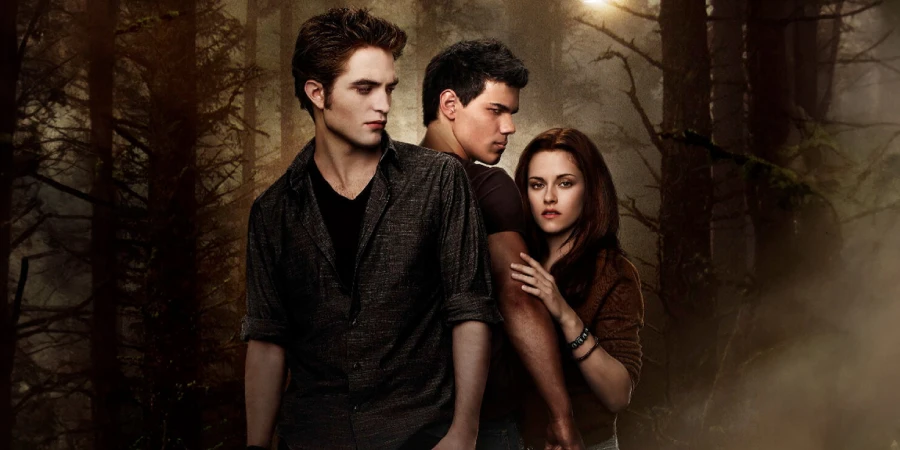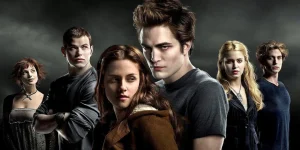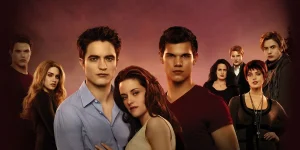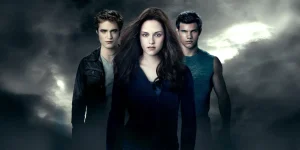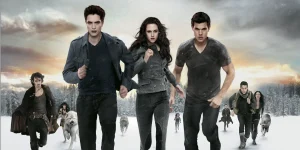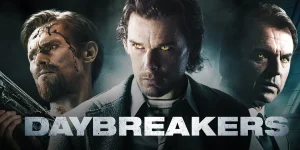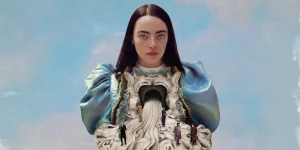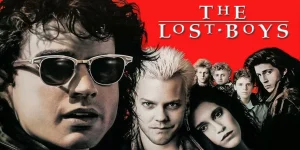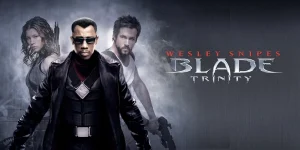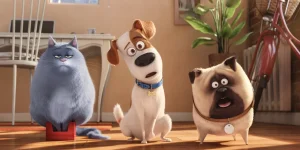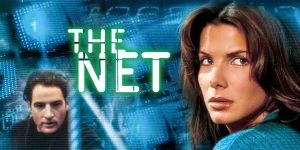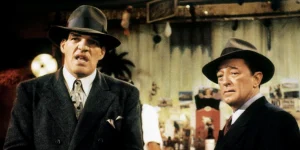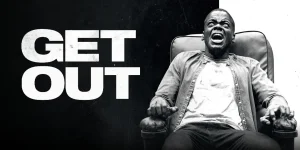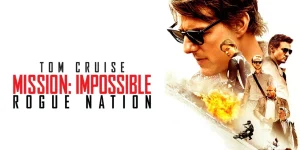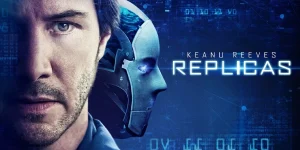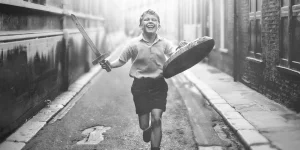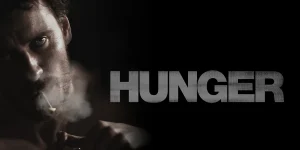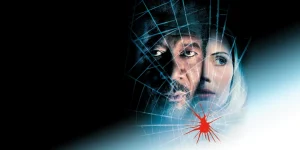The Twilight Saga: New Moon (2009), directed by Chris Weitz, is the second installment in the hugely popular Twilight franchise based on Stephenie Meyer’s novels. This chapter takes a darker, more emotional turn, focusing on loss, longing, and the growing complexities of Bella’s supernatural relationships.
Table of Contents
ToggleDetailed Summary
Bella’s Birthday Disaster
The movie begins with Bella Swan (Kristen Stewart) celebrating her 18th birthday with Edward Cullen (Robert Pattinson) and his vampire family. What should have been a joyful occasion turns disastrous when Bella gets a paper cut, and Jasper (Jackson Rathbone), unable to resist her blood, nearly attacks her. Edward saves her but realizes the danger his world poses to her.
Edward’s Departure
Fearing for Bella’s safety, Edward decides to leave Forks with his family, breaking Bella’s heart. This is one of the most pivotal scenes: Edward coldly tells Bella he doesn’t want her anymore. She collapses in the forest, abandoned and devastated, while months pass by in her grief, represented by a rotating camera sequence showing the seasons changing outside her window.
Jacob’s Comfort and Transformation
During her depression, Bella finds solace in Jacob Black (Taylor Lautner), her childhood friend. Their friendship blossoms, and Jacob becomes a central figure in her healing process. However, Jacob is hiding a secret of his own—he is a werewolf, part of a pack that exists to protect humans from vampires.
Adrenaline and Hallucinations
Bella discovers that putting herself in danger makes her hallucinate Edward’s voice. Seeking adrenaline rushes to feel connected to him, she rides motorcycles, cliff dives, and engages in reckless behavior. Her relationship with Jacob deepens, but her heart remains tied to Edward.
The Volturi and Alice’s Vision
After a cliff-diving accident, Alice (Ashley Greene) mistakenly believes Bella has died. Edward, consumed by grief, decides to provoke the Volturi—a powerful coven of ancient vampires—into killing him. Bella and Alice rush to Italy to stop him. In a tense and dramatic scene, Bella prevents Edward from revealing himself to humans, saving his life just in time.
Facing the Volturi
Edward, Bella, and Alice are summoned by the Volturi, led by Aro (Michael Sheen), Caius, and Marcus. Aro is fascinated by Bella’s immunity to vampire powers, hinting at her potential as a vampire. The Volturi allow them to leave, but only under the condition that Bella eventually becomes a vampire.
Movie Ending
The film concludes back in Forks, with Edward confessing his love to Bella and explaining his departure was to protect her, not because he stopped loving her. Bella forgives him, reaffirming their bond. However, the conflict escalates when Jacob reminds Bella of the treaty between vampires and werewolves: if the Cullens turn Bella into a vampire, the truce will be broken.
The final moments raise the stakes—Bella, caught between two worlds, insists she wants to become a vampire. Edward, still reluctant, agrees on one condition: he will only change her if she marries him. The film ends on this emotional cliffhanger, setting up Eclipse.
Are There Post-Credits Scenes?
No, The Twilight Saga: New Moon does not include any post-credits scenes. The movie ends directly after Bella and Edward’s cliffhanger proposal moment, leaving the tension to carry into the next installment.
Type of Movie
This film is a romantic fantasy drama with strong elements of supernatural adventure and teen romance, centered on emotional turmoil, love triangles, and supernatural politics.
Cast
- Kristen Stewart as Bella Swan
- Robert Pattinson as Edward Cullen
- Taylor Lautner as Jacob Black
- Ashley Greene as Alice Cullen
- Michael Sheen as Aro
- Dakota Fanning as Jane
- Jackson Rathbone as Jasper Hale
- Kellan Lutz as Emmett Cullen
- Nikki Reed as Rosalie Hale
- Peter Facinelli as Carlisle Cullen
- Elizabeth Reaser as Esme Cullen
Film Music and Composer
The score was composed by Alexandre Desplat, who gave the film a haunting and melancholic sound fitting Bella’s grief and emotional journey. The soundtrack features artists like Muse, Death Cab for Cutie, Thom Yorke, and Bon Iver, contributing to the film’s moody atmosphere.
Filming Locations
The movie was filmed primarily in Vancouver, British Columbia, with additional filming in Montecatini Terme and Volterra, Italy for the Volturi scenes. The Italian locations were crucial in giving authenticity to the ancient, powerful, and eerie atmosphere of the Volturi’s stronghold.
Awards and Nominations
- Won People’s Choice Award for Favorite Movie
- Won multiple MTV Movie Awards, including Best Male Performance (Robert Pattinson) and Best Breakthrough Performance (Taylor Lautner)
- Nominated for various Teen Choice Awards, winning many in categories like Romance and Chemistry
Behind the Scenes Insights
- Taylor Lautner underwent an intense physical transformation, gaining significant muscle mass to keep the role of Jacob (producers originally considered recasting him).
- The Italian scenes drew huge crowds of fans, forcing heavy security during filming.
- Kristen Stewart described Bella’s depression sequences as the most challenging of her career up to that point.
- Robert Pattinson admitted that filming the breakup scene in the forest was emotionally draining, as it was the emotional anchor of the film.
Inspirations and References
The movie is adapted directly from Stephenie Meyer’s novel New Moon. Themes of abandonment and depression were inspired by Meyer’s exploration of love, loss, and healing, with references to Romeo and Juliet (explicitly mentioned in the film during Bella’s literature class and Edward’s attempted suicide).
Alternate Endings and Deleted Scenes
Some deleted scenes include extended moments of Bella’s depression and her reckless stunts. None of these alternate scenes significantly changed the film’s narrative arc, but they offered more insight into Bella’s emotional state.
Book Adaptations and Differences
Compared to the book:
- The film condenses Bella’s months of depression into a rapid montage.
- The Volturi scenes are expanded visually, giving more grandeur to their introduction.
- Jacob’s transformation into a werewolf is shown earlier and with more cinematic spectacle.
Memorable Scenes and Quotes
Key Scenes
- Edward breaking up with Bella in the forest.
- The “months passing” depression montage with Bella sitting by her window.
- Jacob revealing his werewolf transformation.
- Bella running through the Italian plaza to save Edward.
- Bella standing up to the Volturi.
Iconic Quotes
- Edward: “You’re not good for me, Bella.”
- Bella: “If this is about my soul, take it. I don’t care.”
- Jacob: “I’m not giving up. I’ll fight for you until your heart stops beating.”
- Aro: “Fascinating… absolutely fascinating.”
Easter Eggs and Hidden Details
- The Romeo and Juliet play is shown early in the film, foreshadowing Edward’s suicidal attempt in Italy.
- Bella’s dream at the beginning, where she sees herself aged, symbolizes her fear of mortality compared to Edward’s immortality.
- The Volturi’s costumes were designed to reflect Renaissance Italy, grounding them in a historical sense of timelessness.
Trivia
- Chris Weitz replaced Catherine Hardwicke as director after Twilight.
- The film grossed over $700 million worldwide, making it one of the highest-grossing films of 2009.
- Dakota Fanning barely speaks in the film but still made a huge impact with her chilling portrayal of Jane.
- The cliff-diving sequence was done with a mix of stunt work and CGI for safety reasons.
Why Watch?
New Moon is essential for understanding the love triangle between Bella, Edward, and Jacob, and it sets up the darker tone for the rest of the saga. It’s a mix of heartbreak, supernatural politics, and teenage angst, with enough spectacle to keep fans invested.
Director’s Other Movies
- About a Boy (2002)
- The Golden Compass (2007)
- A Better Life (2011)
Recommended Films for Fans
- The Hunger Games (2012)
- Beautiful Creatures (2013)
- Warm Bodies (2013)
- The Mortal Instruments: City of Bones (2013)
- Red Riding Hood (2011)

